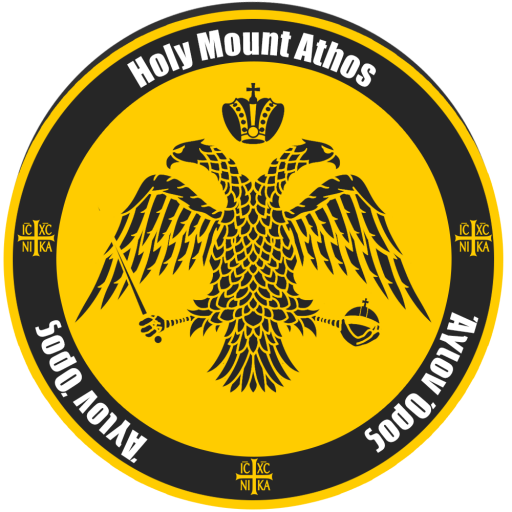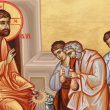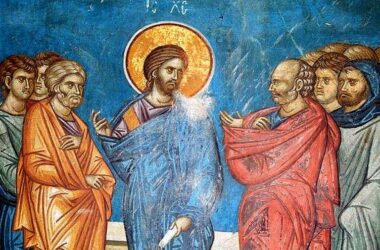Every year, on August 6th, Orthodox Christians worldwide celebrate the great feast of the Transfiguration of our Lord Jesus Christ. The Transfiguration is also known among the people as “Probaje.” The term comes from the Slavic words “Obrejene” or “Probojene,” which means “change” or “transformation.”
The celebration dates back to the beginning of the 4th century when Saint Empress Helena built a beautiful Church on the high Mount Tabor. However, this time we will not present the historical evolution of the feast on August 6th. Instead, we will bring to your attention a subject that many of us may not have known about until now, and that takes place annually on Mount Tabor: the appearance of the luminous cloud during the Holy Liturgy.
The Miracle on Mount Tabor
The Miracle of the Transfiguration of the Savior took place on Mount Tabor, also known as the “holy mountain of God.” In this place, while praying, the Savior was transfigured. The Holy Gospels tell us that a light, like that of the sun, enveloped the face of the Savior, and His clothes became white as snow and radiant. Then, the two great Prophets, Moses and Elijah, appeared, and a voice came from a cloud, saying, “This is My beloved Son, with whom I am well pleased. Listen to Him!” (Matthew 17:5). Mount Tabor, the site of this great miracle, has an altitude of approximately 570 meters and is located in biblical Galilee, near Cana and Nazareth. Tabor is first mentioned in the Holy Scripture when Joshua divides the Promised Land among the 12 tribes of Israel. The first to identify Tabor as the exact location of the Transfiguration was Origen, a learned Christian theologian considered one of the most reputable writers of the Church in the 3rd century. Then, around the 4th century, Saint Cyril of Jerusalem, Epiphanius of Cyprus, and Blessed Jerome also sought the place of the Transfiguration and ultimately reached the same conclusion: Mount Tabor was the actual site of the miracle.
The Luminous Cloud on the Feast Day
Every year, on Mount Tabor, a remarkable miracle takes place, which some less faithful people dismiss as a mere meteorological phenomenon. Specifically, on the night of the Transfiguration, after midnight, around 1:00 a.m., a luminous cloud descends upon the faithful gathered at the Greek monastery to participate in the Holy Liturgy. During the service, the cloud takes on various dimensions, and sometimes small strips break off from it, forming shapes resembling angels or birds. “There is no fixed time for the arrival of this cloud, but it comes at some point during the service, while outside it’s 30 degrees Celsius, the intense heat, even though it’s night and not even a breeze is blowing. The cloud is like a luminous mist that envelops the entire mountaintop and eventually withdraws. By morning, the summit of the mountain is covered in dew that clings to the church, to everything there on the mountaintop, including the people who are staying out in the open,” testifies Archimandrite Father Teofil Anăstăsoaie, the representative of the Romanian Patriarchate in the Holy Land and the superior of the Romanian Monastic Establishments in Jerusalem, Jordan, and Jericho.
Some time ago, a pilgrim to the Holy Places rented a hot air balloon to admire the scenery and the crowd gathered on Mount Tabor for the Transfiguration. Having received permission from the authorities for this action, he ascended with the balloon and began to photograph and film the surroundings. After descending, upon analyzing the photos and videos, he noticed that the bright cloud appeared out of nowhere, lingered for a few moments only on the top of the mountain, surrounded it, and then simply melted away, disappearing from the photographs.
Although some argue that it is merely a simple atmospheric phenomenon, an explainable coincidence mixed with the imagination of pilgrims, the faithful who participated in the Holy Liturgy at the Orthodox Monastery on the mountain unanimously confirm that the luminous cloud, which does not have the characteristics of an ordinary cloud as we see in the sky daily, and sometimes emits a pleasant fragrance around it. In fact, a few years ago, a team of Israeli and Russian meteorological researchers set out to closely investigate this phenomenon, and at the end of the study, Sergeiy Mirov, one of the participants, publicly announced the result, explaining that “a luminous sphere of mist surrounds the faithful, after which the cloud appears above the Church’s cross, growing in size, and descends over the faithful, covering and surrounding them in moisture.” The conclusion was simple: this vapor or mist cannot be physically generated, considering the dry air in the area and the high temperatures, so the phenomenon goes beyond meteorology and unquestionably falls into the category of miracles.
Indeed, miracles cannot penetrate the hearts of those who constantly seek rational explanations and who cannot grasp the idea that God still works in the world to strengthen the faithful. He works in the world through such signs, like the Descent of the Holy Light in Jerusalem, but only those with pure hearts, open and cleansed souls, can understand them as such.
Source: http://blog.bizanticons.ro.






